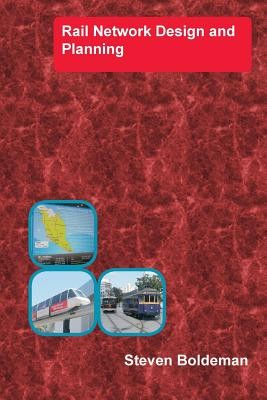
- We will send in 10–14 business days.
- Author: Steven Boldeman
- Publisher: Dolans Publishing
- ISBN-10: 0648309339
- ISBN-13: 9780648309338
- Format: 15.2 x 22.9 x 1.6 cm, minkšti viršeliai
- Language: English
- SAVE -10% with code: EXTRA
Reviews
Description
This book describes in detail the design of rail networks and systems. Many of the different elements of a rail system are described and explained. Common features such as junctions and terminus's are explained in detail. The broad principles of network design are also discussed, such as achieving a high network speed, and building pendulum lines without curves.
Methods are explained for describing a rail system, such as the route length and the number of passengers per day. Common features of rail systems are also described, such as stabling yards and maintenance centres. The relationship between the different types of rail modes is also analysed.
This book also outlines how to determine average speeds through rail systems, using kinematic formulas and accelerations. Braking curves are also discussed and explained. Average speeds for the many different types of rail transport modes are explained.
This book also provides a broad overview of rail infrastructure and stations. A brief introduction to the many different types of engineering disciplines and types is given. A brief introduction is also provided for stations and their environment.
Many of the different types of rail projects are described. Key success factors for various different types of rail projects are discussed, as are the measures that can be used for gauging success and failure.
EXTRA 10 % discount with code: EXTRA
The promotion ends in 23d.05:48:55
The discount code is valid when purchasing from 10 €. Discounts do not stack.
- Author: Steven Boldeman
- Publisher: Dolans Publishing
- ISBN-10: 0648309339
- ISBN-13: 9780648309338
- Format: 15.2 x 22.9 x 1.6 cm, minkšti viršeliai
- Language: English English
This book describes in detail the design of rail networks and systems. Many of the different elements of a rail system are described and explained. Common features such as junctions and terminus's are explained in detail. The broad principles of network design are also discussed, such as achieving a high network speed, and building pendulum lines without curves.
Methods are explained for describing a rail system, such as the route length and the number of passengers per day. Common features of rail systems are also described, such as stabling yards and maintenance centres. The relationship between the different types of rail modes is also analysed.
This book also outlines how to determine average speeds through rail systems, using kinematic formulas and accelerations. Braking curves are also discussed and explained. Average speeds for the many different types of rail transport modes are explained.
This book also provides a broad overview of rail infrastructure and stations. A brief introduction to the many different types of engineering disciplines and types is given. A brief introduction is also provided for stations and their environment.
Many of the different types of rail projects are described. Key success factors for various different types of rail projects are discussed, as are the measures that can be used for gauging success and failure.


Reviews